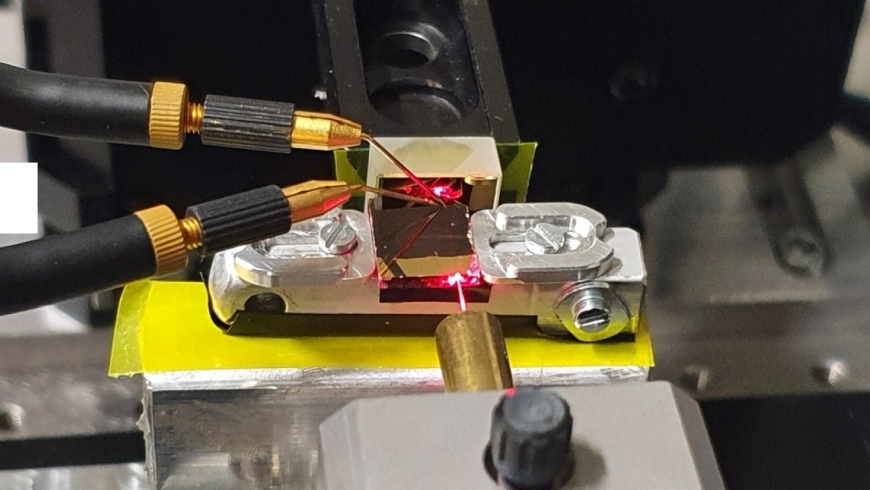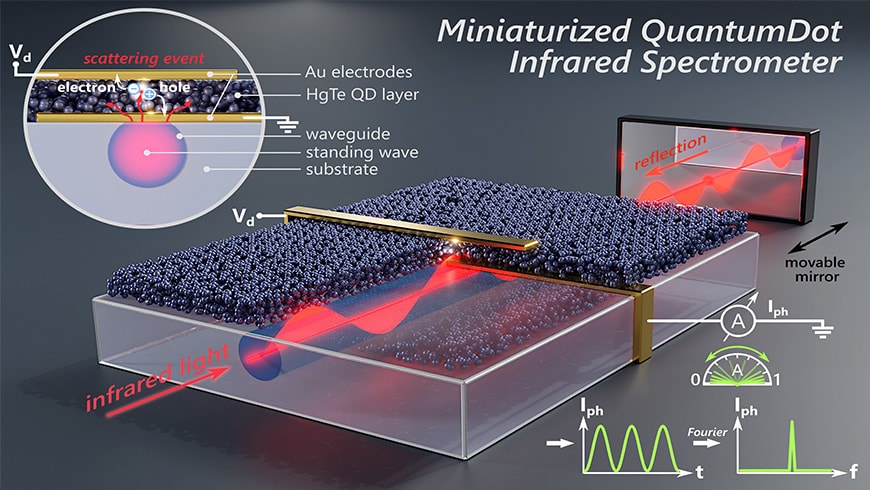Mini infrared detector fits on a chip
A team of scientists led by an Empa researcher has succeeded in developing a low-cost miniaturization process for IR spectrometers based on a quantum dot photodetector that can be integrated on a single chip.

Researchers led by Empa researcher Ivan Shorubalko have developed a cost-effective miniaturization process for IR spectrometers based on a quantum dot photodetector. The highlight: the solution can be integrated on a single chip. Details were published in Nature Photonics.
Ultra compact design
The new spectrometer has a wide spectral bandwidth and a moderate spectral resolution of 50 cm-1 with a total active volume of the spectrometer of less than 100 by 100 by 100 micrometers. This ultra-compact design of the spectrometer allows optical-analytical measurement instruments to be integrated relatively quickly and easily into consumer electronics and space equipment.
"The monolithic integration of IR photodetectors in the subwavelength range has enormous implications for the scaling of Fourier transform waveguide spectrometers. However, our design could also be used for miniaturized Raman spectrometers, for biosensors and 'Lab-on-a-Chip'devices and for the development of high-resolution hyperspectral cameras," says Shorubalko.

Way for wider use
The miniaturization of infrared spectrometers is enabling wider use in consumer electronics, such as smartphones for food inspection, detection of hazardous chemicals, air pollution monitoring, and portable electronic devices. They can be used for quick and easy detection of certain chemicals without the need for laboratory equipment. In addition, they can be useful for detecting counterfeit drugs and greenhouse gases such as methane and CO2.
Source: Press release/Empa









